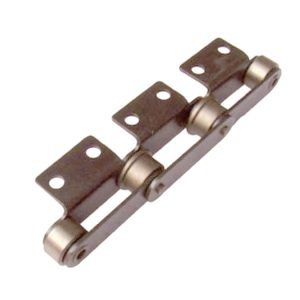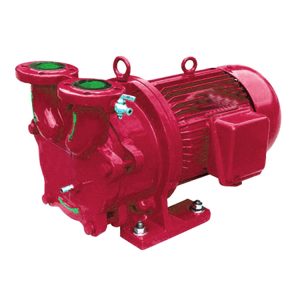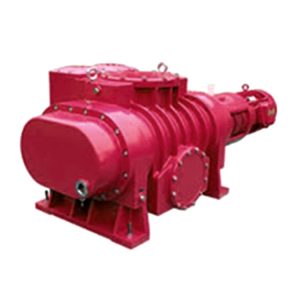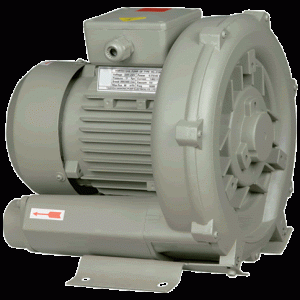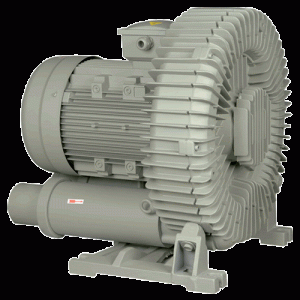Product Description
|
Product Name |
32 Teethed Aluminum Alloy Timing Belt Pulley 10mm 12mm 15mm 20mm |
|
Material |
Aluminum alloy,stainless steel |
|
Surface treatment |
Natural color anode |
|
Customized service |
Support light customization and logo customization |
|
Remarks |
The default engraving brand name and size of the product. If you need not engraving, please contact the customer service for comments |
| Packaging Details | Carton box with anti-static package,carton plus with wooden case. |
| Main Products | Shaft Parts, Timing Belt Pulley, Gears, CNC Machining Parts, Sheet Metal Fabrication |
| Certifications(2) | ISO9001:2015, IPMS |
| Applicable Industries | Building Material Shops, Manufacturing Plant, Food & Beverage Factory, Farms |
| Supply Ability | 100000 Piece/Pieces per Month |
| Dimension | oem provided |
| Surface finish | anodized |
| Lead Time | 25 days |
| Application | Furniture,cabinet |
| Custom | OEM and ODM services are welcome,we can make cutom LOGO and products according to customer’s requests. |
| Quality control Our | Finished product inspection,Warranty available |
| service | Swiss machining;deburring;lathe/turning;5 axis;micromachining |
| Color |
silver,gold,black,red,bulue,and according to the customer requests. |
/* January 22, 2571 19:08:37 */!function(){function s(e,r){var a,o={};try{e&&e.split(“,”).forEach(function(e,t){e&&(a=e.match(/(.*?):(.*)$/))&&1
| Certification: | ISO |
|---|---|
| Pulley Sizes: | Type E |
| Manufacturing Process: | Casting |
| Material: | Stainless Steel |
| Surface Treatment: | Baking Paint |
| Application: | Chemical Industry, Grain Transport, Power Plant |
| Samples: |
US$ 100/piece
1 piece(Min.Order) | |
|---|
| Customization: |
Available
| Customized Request |
|---|
How do pulleys affect the performance of fitness equipment?
Pulleys have a significant impact on the performance of fitness equipment by enabling the smooth and efficient operation of various exercise machines. Here’s how pulleys affect the performance of fitness equipment:
1. Resistance Adjustment: Pulleys are often used in fitness equipment to provide adjustable resistance. By incorporating different-sized pulleys or using pulley systems with varying mechanical advantage, the resistance level can be adjusted to meet the user’s desired intensity. This allows individuals to customize their workouts and progress in their fitness journey.
2. Cable Systems: Many fitness machines, such as cable machines and functional trainers, utilize pulleys in their cable systems. These pulleys guide the cables and allow for multi-directional movements, providing a wide range of exercise options. The smooth movement facilitated by pulleys enhances user comfort and ensures consistent resistance throughout the exercise motion.
3. Weight Stacks: Weight stack machines commonly found in gyms employ pulleys to create resistance. The weight stack is connected to the exercise handles or levers through a cable and a series of pulleys. As the user performs the exercise, the pulleys help distribute the load and maintain proper cable tension, resulting in smooth and controlled movements.
4. Functional Training: Pulleys play a crucial role in functional training equipment, such as suspension trainers or resistance bands. These systems often feature adjustable pulleys that allow users to target specific muscle groups and perform a wide variety of functional movements. The pulleys enable smooth and controlled resistance, enhancing overall workout effectiveness.
5. Mechanical Advantage: Pulley systems can provide mechanical advantage in fitness equipment, making exercises more manageable and accessible. By utilizing pulleys with appropriate mechanical advantage, individuals can perform exercises that would otherwise require greater strength or effort. This feature is particularly beneficial for users with varying fitness levels or those recovering from injuries.
6. Smooth and Controlled Motion: Pulleys contribute to the smooth and controlled motion of fitness equipment. By reducing friction and providing proper cable alignment, pulleys ensure that the resistance is applied evenly throughout the exercise range of motion. This promotes fluid and natural movements, minimizing the risk of injury and maximizing the effectiveness of the exercise.
7. Durability and Safety: High-quality pulleys used in fitness equipment are designed to withstand the rigors of constant use and heavy loads. They are often made from durable materials and incorporate features such as sealed bearings to minimize maintenance and maximize safety. Reliable pulley systems contribute to the longevity and safety of fitness equipment.
Overall, pulleys are essential components in fitness equipment, influencing resistance adjustment, cable systems, weight stacks, functional training, mechanical advantage, motion quality, and equipment durability. They enhance the effectiveness, versatility, and user experience of fitness machines, allowing individuals to achieve their fitness goals and maintain an active and healthy lifestyle.
Can pulleys be employed in agricultural machinery and equipment?
Yes, pulleys can be employed in agricultural machinery and equipment to facilitate various tasks and improve efficiency. They are versatile components that provide mechanical advantage, enable power transmission, and aid in the movement and control of agricultural implements. Here’s how pulleys can be used in agricultural applications:
1. Belt Drives: Pulleys are commonly used in belt-driven systems in agricultural machinery. They are used in conjunction with belts to transmit power from the engine or motor to different components, such as pumps, fans, and cutting mechanisms. By adjusting the size and arrangement of the pulleys, farmers can control the speed and torque of the driven equipment, optimizing its performance for specific tasks.
2. Harvesting Equipment: Pulleys are utilized in various types of harvesting equipment, such as combines, forage harvesters, and balers. They are employed in the cutting and threshing mechanisms to transfer power and drive the rotating components. Pulleys enable the synchronization of different parts, ensuring efficient crop harvesting and processing.
3. Irrigation Systems: Pulleys play a role in agricultural irrigation systems, particularly in the operation of water pumps. They are incorporated into the pump drive systems and help transfer power from engines or motors to the pump impellers. By using pulleys, farmers can adjust the pump speed and flow rate to meet the irrigation requirements of different crops and soil conditions.
4. Hay and Forage Equipment: In hay and forage equipment, pulleys are utilized to drive various components, such as cutting blades, conditioning rolls, and feed mechanisms. They enable the transfer of power from the tractor or engine to these components, facilitating efficient cutting, processing, and feeding of hay and forage materials.
5. Conveyor Systems: Pulleys are employed in conveyor systems used in agriculture for material handling tasks. They help drive the belts or chains that transport crops, grains, or other agricultural products. Pulleys ensure smooth and controlled movement, enabling the efficient transfer of materials between different stages of processing, storage, or transport.
6. Livestock Equipment: Pulleys find applications in livestock equipment, such as feed mixers, milking machines, and ventilation systems. They are used to transfer power and facilitate the movement of various components involved in these systems. Pulleys contribute to the smooth operation and automation of livestock processes, enhancing productivity and animal welfare.
7. Equipment Adjustments: Pulleys are also employed in agricultural equipment to provide adjustability and flexibility. They enable the adjustment of cutting heights, belt tension, and machine settings, allowing farmers to adapt the equipment to different crops, field conditions, or operational requirements.
Overall, pulleys play a significant role in agricultural machinery and equipment, enhancing power transmission, enabling precise control, and improving the overall efficiency of agricultural operations. Their versatility and adaptability make them valuable components in various agricultural applications.
How do pulleys contribute to load distribution and lifting?
Pulleys play a crucial role in load distribution and lifting by providing mechanical advantage and distributing the load over multiple segments of rope or belt. Here’s how pulleys contribute to load distribution and lifting:
1. Mechanical Advantage: Pulleys provide mechanical advantage, which allows for the multiplication of the force applied to the rope or belt. When a force is applied to one end of the rope or belt, it creates tension that causes the pulley to rotate. As the pulley turns, the force is transmitted to the load attached to the other end of the rope or belt. By distributing the load over multiple pulleys, the force required to lift the load is reduced, making it easier to lift heavier objects.
2. Load Sharing: Pulleys enable load sharing among multiple segments of the rope or belt. In systems with multiple pulleys, such as block and tackle arrangements, the load is distributed over several segments of rope or belt. Each segment carries a fraction of the load, reducing the strain on each individual segment. Load sharing ensures that the load is evenly distributed, minimizing the risk of overload or failure in any single segment.
3. Directional Change: Pulleys allow for directional change in the force applied to the load. By redirecting the force along a different path, pulleys enable lifting and moving loads in various directions, including vertically, horizontally, or at an angle. This directional change is particularly useful in situations where the force needs to be applied from a different position or angle than the original force application.
4. Balance and Stability: Pulleys contribute to load distribution and lifting by providing balance and stability. The use of multiple pulleys in a system helps to distribute the load evenly, preventing excessive stress on any single point. This balanced distribution of the load enhances stability and reduces the risk of tipping or imbalance during lifting operations.
5. Control and Precision: Pulleys provide control and precision in load distribution and lifting. By adjusting the tension in the rope or belt, operators can achieve precise positioning and movement of the load. This level of control allows for accurate placement of heavy objects and ensures smooth and controlled lifting operations.
6. Increased Lifting Capacity: By leveraging mechanical advantage and load distribution, pulleys increase the lifting capacity. The mechanical advantage gained through the use of pulleys allows for the lifting of heavier loads with less effort. The load is distributed over multiple segments of rope or belt, reducing the force required to lift the load and enabling the lifting of objects that would otherwise be too heavy to lift manually.
Overall, pulleys contribute to load distribution and lifting by providing mechanical advantage, load sharing, directional change, balance and stability, control and precision, and increased lifting capacity. These contributions make pulleys an essential component in various lifting and load handling applications.
editor by CX
2024-03-04











